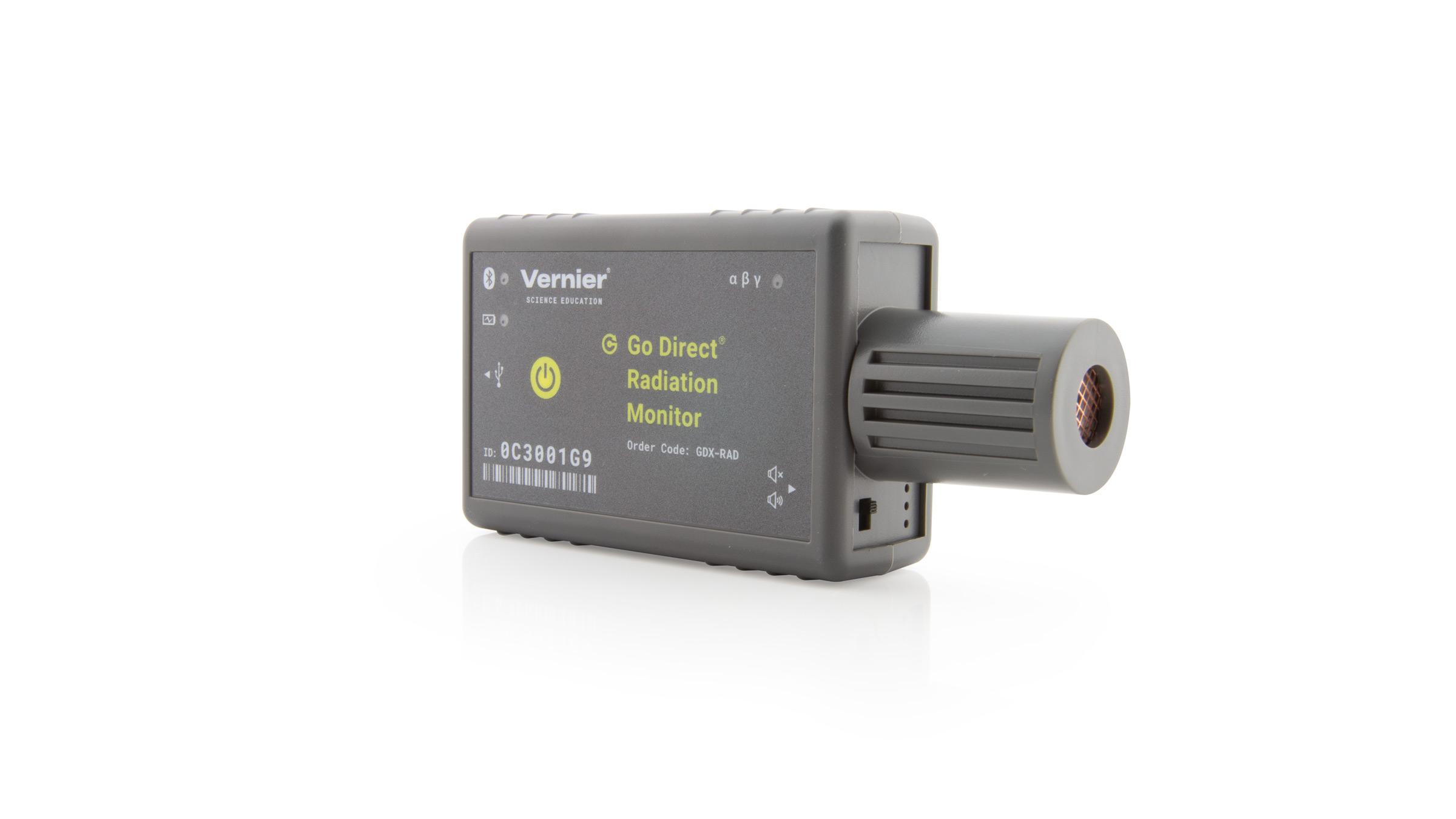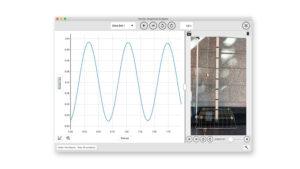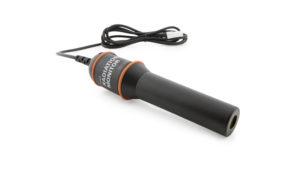Use the Go Direct Radiation Monitor to explore radiation statistics, measure the rate of nuclear decay, and monitor radon progeny. This easy-to-use sensor consists of a Geiger-Mueller tube mounted in a small, rugged, plastic case. A thin window protected by a metal screen allows alpha radiation to be detected, along with beta and gamma. Each new detection is indicated by a flashing red LED indicator and can also be accompanied by an optional audio signal.
The Go Direct Radiation Monitor can be used in a variety of experiments:
- Determine the half-life of an isotope.
- Investigate radiation shielding.
- Detect background radiation sources.
Rechargeable Battery—Ready When You Are
The robust rechargeable battery offers long battery life and provides always-ready operation when using the sensor wirelessly. Monitor battery life directly from our award-winning Vernier Graphical Analysis® app, as well as LabQuest® 3. Should the battery run low, simply connect the sensor to the charging cable and keep on collecting—no interruptions or inconvenience to you or your students.
Wireless or Wired—The Flexibility to Choose
Our Go Direct sensors connect directly to your mobile device, Chromebook™, or computer using our Vernier Graphical Analysis® app—no additional equipment or software purchases are necessary. Go Direct sensors can be used wired via USB or wirelessly via Bluetooth® wireless technology, allowing you to choose the best solution for your classroom or laboratory.



